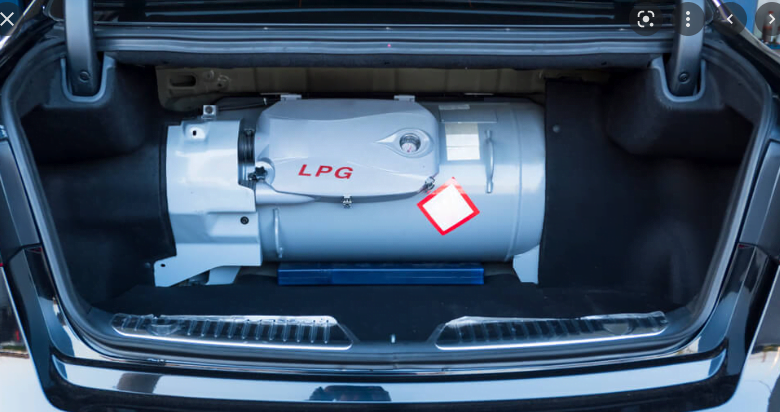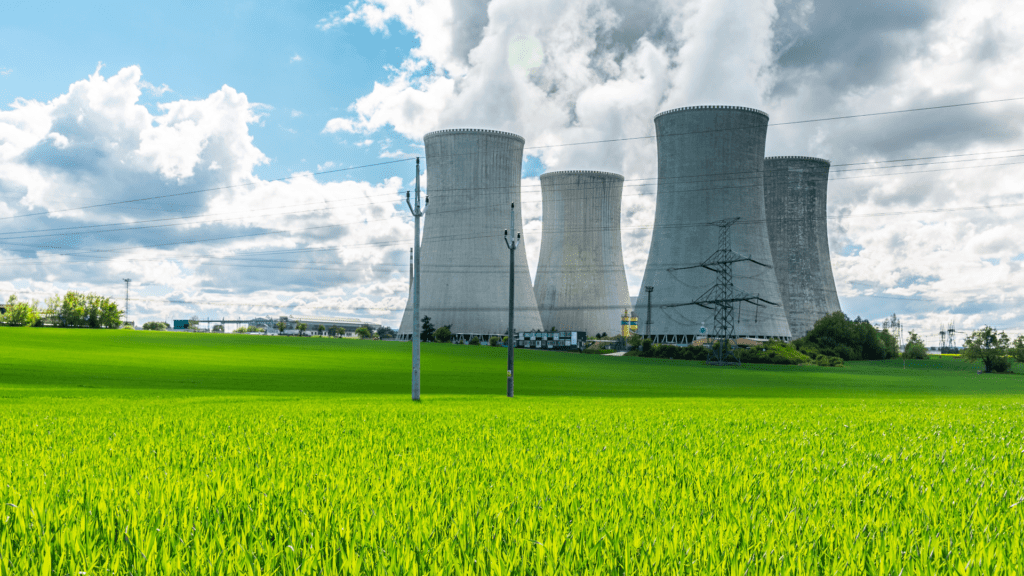The Goals of the Heal This Rock Website.
Welcome to ‘Heal
This Rock,’ a platform dedicated to uniting rational
thinking humans to confront and address the pressing environmental
challenges facing our planet.
As we navigate the complexities of climate change,
deforestation, pollution, and biodiversity loss, it becomes increasingly clear
that collective action and rational solutions are paramount.
The mission of ‘Heal This Rock’ is to foster a
collaborative environment where evidence-based strategies and informed
decision-making can flourish.
Our planet’s health is inextricably linked to our
well-being, and the urgency for sustainable practices has never been greater.
With a global perspective, ‘Heal This Rock’ aims
to bring together individuals, communities, and experts from various fields to
share knowledge, innovate, and implement effective environmental strategies.
By focusing on rational actions, we emphasise the
importance of data-driven approaches, scientific research, and technological
advancements in crafting solutions that are both practical and will make a
difference.
The
Challenges We Must Face Are Many & Substantial.
Environmental challenges are multifaceted and
interconnected, requiring concerted efforts from all sectors of society.
Whether it’s reducing carbon emissions, conserving
natural habitats, or promoting cheap and clean energy, every action counts.
The ‘Heal This Rock’ website serves as a beacon
for those committed to making a difference, providing ideas and insights on a
dedicated platform for dialogue and collaboration.
We believe that by harnessing the power of
collective intelligence and rational thinking, we can pave the way for a more
sustainable and resilient future.
So let’s explore various rational actions that
individuals, organizations, and governments can take to heal our planet.
From practical tips for everyday living to
large-scale policy initiatives, ‘Heal This Rock’ is dedicated to empowering you
with the knowledge and tools needed to make a tangible impact.
Join us on this journey as we strive to protect
and preserve the natural world for future generations.
Humans
and Sharks Living Together On This Planet.
Understanding the intricate relationship between
humans and sharks is fundamental to fostering a coexistence that benefits both
species and the broader marine ecosystem.
Sharks play a critical role in maintaining the
health of our oceans, acting as apex predators that regulate species
populations and contribute to the overall balance of marine life.
Despite their ecological importance, sharks are
often misunderstood and maligned, largely due to sensationalized media
portrayals and deeply ingrained myths.
One of the most pervasive myths is the notion that
sharks are voracious man-eaters.
In reality, shark attacks on humans are
exceedingly rare.
Most species are not dangerous to humans and
typically avoid interaction.
The unsubstantiated fear surrounding sharks often
stems from a lack of understanding.
By educating the public about the actual behaviour
and ecological role of sharks, we can diminish unwarranted fears and promote a
more informed perspective.
Several strategies can be implemented to ensure
safe interactions between humans and sharks, thereby fostering a harmonious
coexistence.
First, public education campaigns are crucial.
These campaigns can highlight the importance of sharks in marine ecosystems and
dispel common misconceptions.
Additionally, promoting responsible tourism
practices, such as shark diving and underwater
shark watching tours with reputable and eco-conscious operators, can
provide economic incentives for shark conservation while educating
participants.
Supporting the Vulnerable Of
Humans: Uplifting
The Battlers.
In the pursuit of a sustainable future, it is
imperative that we do not marginalize or ignore those around us who are
struggling.
Whether these challenges are faced by individuals
or entire communities, providing support to the vulnerable is not just an
ethical imperative but also a strategic necessity for building stronger, more
resilient societies.
When we uplift battlers, we create a ripple effect
that benefits the entire social fabric.
Vulnerable groups often lack access to basic
necessities such as clean water, healthcare, education, and economic
opportunities.
Addressing these gaps is crucial. Governments and
organizations must collaborate to offer targeted programs that address the
specific needs of these communities.
For instance, investing in healthcare
infrastructure in underserved areas can drastically improve public health
outcomes, while educational initiatives can empower individuals with the
knowledge and skills needed to break the cycle of poverty.
Increased economic support for battlers is a
crucial factor in uplifting the vulnerable, especially the elderly and those
living on the poverty line. Implementing job training programs and providing zero
interest micro-loans can facilitate economic independence and growth.
Micro-loans in particular have proven to be
effective in enabling individuals to start small businesses, which can then
contribute to local economies and create jobs.
This form of economic empowerment is essential for
fostering self-sufficiency and long-term stability.
Community engagement is another vital aspect.
Encouraging active participation from the vulnerable groups in decision-making
processes ensures that their voices are heard and their needs are met.
This can be achieved through community forums,
participatory budgeting, and inclusive policy-making. Such approaches not only
validate the experiences of marginalized individuals but also build trust and
cooperation between communities and governing bodies.
What
Can Governments, Businesses And Wealthy Individuals Do?
There’s a lot that can be done help people experiencing
homelessness and provide them with hope for a better future:
1.
Increase funding and resources
for affordable housing initiatives, including the construction of low-income
housing units and rent subsidies.
2.
Provide free job training
programs, vocational education, and employment assistance services to help
individuals develop skills and find sustainable employment opportunities.
3.
Provide free access to mental
health services, counselling, and substance abuse treatment programs to address
underlying issues that may contribute to homelessness.
4.
Establish free emergency shelters
and temporary housing facilities to provide a safe and supportive environment
for those in immediate need of shelter.
5.
Invest in outreach programs that
connect individuals on the streets with available resources and services, such
as food banks, health clinics, and social assistance programs.
6.
Implement policies and incentives
that encourage the development of free or very cheap supportive housing to
those that need it most for 5 years. Also periodically provide them with on-site
support services.
7.
Collaborate with non-profit
organizations and community groups to provide essential items like food, free
electricity, clothing, hygiene products, and school supplies and free lunches
for children experiencing homelessness.
8.
Support educational initiatives
and free after-school programs that offer academic assistance, mentorship, and
life skills development for homeless youth.
9.
Invest in job creation and
economic development programs in underserved communities to create employment
opportunities and revitalize struggling neighbourhoods full of battlers.
10.
Provide access to free legal aid
services to help individuals navigate complex legal issues related to housing,
employment, and other civil matters.
11. Raise
awareness and promote public education campaigns to combat stigma and
misconceptions surrounding homelessness, fostering a more compassionate and
inclusive society.
Chemical
Recycling Of Plastics: A Solution for Everyone.
Chemical
recycling of plastics represents a transformative approach in addressing
the pervasive issue of plastic waste.
Unlike traditional recycling methods, which
mechanically process plastics, chemical recycling breaks down plastics into
their fundamental chemical components.
This method allows for the conversion of a broader
range of plastics, including those that are typically non-recyclable through
conventional means, into valuable raw materials, thus closing the loop in the
plastic lifecycle.
The science behind chemical recycling involves
various advanced technological processes, Licella’s CAT-HTR technology being
the most exciting of them all.
Sierra Energy’s FastOx Gasification technology, on
the other hand, converts plastic materials into syngas, a mixture of hydrogen
and carbon monoxide, which can be further processed into chemical feedstocks or
energy.
Depolymerization breaks down polymers into
monomers, which can be repolymerized to create new plastics, ensuring that the
quality of the material is maintained.
One of the key benefits of chemical recycling is
its potential to handle mixed and contaminated plastics that are not suitable
for mechanical recycling.
This capability significantly reduces the volume
of plastic waste destined for landfills and incinerators, mitigating
environmental pollution.
Additionally, chemical recycling can produce
high-quality raw materials that can be used to manufacture new plastics,
reducing the reliance on virgin fossil resources and contributing to a more
sustainable circular economy.
As the world grapples with the plastic waste
crisis, chemical recycling emerges as a promising solution.
By converting waste plastics into valuable
resources, it not only addresses environmental concerns but also fosters a
circular economy, underscoring the importance of continued investment and
innovation in this field.
Sustaining
Animal Populations and Prevent
Species Extinctions.
The preservation of animal populations is crucial
for maintaining ecological balance. Biodiversity ensures the stability of
ecosystems, which in turn supports human life by providing essential services
such as pollination, nutrient cycling, and climate regulation.
However, numerous species face the threat of
extinction due to habitat destruction, climate change, poaching and just
because there are a lot of humans in this world that like killing animals for
no good reason other than it makes them feel good.
Conservation programs play a pivotal role in
sustaining animal populations. These efforts often involve habitat restoration,
legal protection, and breeding programs.
Individuals and communities also have a
significant role to play in supporting conservation efforts. Simple actions
such as supporting sustainable and ethical wildlife tourism, reducing plastic
consumption, and participating in citizen science projects can contribute to
the well-being of animal populations.
Hop off the lounge and advocate for wildlife
protection policies and supporting non-profit organizations dedicated to
conservation can amplify the impact of individual efforts.
Together we can raise awareness about the
importance of biodiversity and the threats faced by endangered species,
communities can foster a culture of conservation.
Combating
Desertification: Greening
the Deserts.
Desertification, a severe form of land
degradation, occurs when fertile land becomes increasingly arid, losing its
water bodies, vegetation, and wildlife.
This phenomenon, driven by climatic variations and
unsustainable human activities, poses a significant threat to global ecosystems
and food security.
The primary processes leading to desertification
include deforestation, overgrazing, improper irrigation practices, and the
overexploitation of land resources.
As deserts expand, arable lands diminish, leading
to devastating impacts on local communities, economies, and biodiversity.
One effective approach to combat desertification
is through large-scale tree planting initiatives. Trees play a crucial role in
anchoring the soil, reducing erosion, and improving water retention.
Programs such as the Great Green Wall in Africa
aim to restore 100 million hectares of degraded land by planting resilient,
drought-resistant species across the Sahel region.
These initiatives not only halt the advance of
deserts but also bring social and economic benefits to the communities
involved.
Sustainable agricultural practices also offer
viable solutions to desertification. Techniques such as agro-forestry, where
trees and shrubs are grown alongside crops, help maintain soil fertility and
moisture.
Crop rotation and cover cropping can prevent soil
depletion and reduce the need for chemical fertilizers. Moreover, adopting
water-efficient irrigation systems, like drip irrigation, can conserve water
and ensure its optimal use in arid regions.
Innovative greening projects present another
promising avenue for restoring arid lands. For example, the Loess Plateau in
China has been transformed from a barren landscape into a lush, productive area
through extensive terracing and reforestation efforts.
Similarly, the use of technologies such as cloud
seeding and hydrogel soil conditioners can enhance rainfall and improve soil
moisture retention, respectively.
These projects demonstrate that with the right
combination of science, technology, and community involvement, it is possible
to reclaim and revitalize desertified regions.
Addressing desertification requires a multifaceted
approach that combines ecological restoration, sustainable land management, and
technological innovation.
By implementing these strategies, we can halt the
spread of deserts and create resilient landscapes that support both human and
environmental well-being.
Preventing
Extinctions: Protecting
Endangered Species.
Preventing species extinctions is imperative for
maintaining the delicate balance of our ecosystems.
The primary causes of extinction include habitat
destruction, climate change, pollution, overexploitation, and invasive species.
These factors disrupt the natural habitats and
life cycles of various species, leading to a decline in biodiversity.
Protecting biodiversity is not just about saving
individual species; it is about preserving the intricate web of life that
supports ecosystem health and, ultimately, human well-being.
Biodiversity contributes to ecosystem resilience,
allowing ecosystems to recover from disturbances and maintain functionality.
It supports vital ecosystem services such as
pollination, water purification, disease regulation, and nutrient cycling.
Without a rich variety of species, these services
are compromised, leading to ecosystem degradation and reduced quality of life
for all inhabitants of the planet.
Effective measures to prevent species loss include
habitat preservation and restoration. Protecting existing habitats from
destruction and fragmentation is crucial.
This can be achieved through the establishment of
protected areas, such as national parks and wildlife reserves, which provide
safe havens for species to thrive.
Additionally, restoring degraded habitats by
replanting native vegetation and removing invasive species can help to rebuild
ecosystems and support biodiversity.
This type of situation has led to the near
extinction of the cute little Mexican Walking Fish or Axolotl
which are now on the brink of extinction.
Innovative
Power Solutions for a Sustainable Future.
As the global community grapples with the pressing
need to mitigate climate change, the development of innovative power solutions
is paramount.
A diversified energy strategy that includes
advanced nuclear power, high-efficiency, low-emissions coal-fired power
stations, and modern gas-fired power stations could provide a balanced and
sustainable approach to meet the world’s energy demands.
Advanced
nuclear power, often cited as a zero-emission energy source, holds immense
potential for sustainable energy production.
Modern nuclear reactors, such as Small Modular
Reactors (SMRs) and Generation IV reactors, promise enhanced efficiency and
safety and these exciting technologies have a lot of us saying, “Nuke Power Me Now”.
SMRs, in particular, can be deployed in remote
locations and can give new life to recently closed down Coal Fired Power
Stations, the existing infrastructure can be used to keep the costs down.
SMR’s have been used in Nuclear Ships and Subs for
a long time and I think a lot of us forget that simple fact. They have a small physical footprint, making
them a viable option for a range of applications.
Furthermore, advancements in nuclear technology,
such as the development of thorium reactors, offer opportunities for more
sustainable and less hazardous waste management.
We can also assume that once Quantum
Computers become a reality, they will be able to help us develop
increasingly better Nuclear Power Generation Options and lead us towards
Nuclear Fusion Reactors instead of Fission as with our current technology
options.
While coal-fired power stations have traditionally
been associated with high emissions, recent technological advancements have led
to the development of high-efficiency,
low-emissions (HELE) coal technologies.
These power stations employ techniques like
supercritical and ultra-supercritical combustion, which operate at higher
temperatures and pressures, resulting in increased efficiency and reduced CO2
emissions.
Integrating carbon capture and storage (CCS)
technology further mitigates the environmental impact by trapping and storing
CO2 emissions before they are released into the atmosphere.
Similarly, modern gas-fired power stations offer a
cleaner alternative to traditional fossil fuels. Combined Cycle Gas Turbines
(CCGT) are particularly noteworthy due to their ability to achieve high thermal
efficiency by utilizing both gas and steam turbines.
This dual approach not only maximizes energy
output but also significantly reduces emissions.
Additionally, the abundance of natural gas and its
relatively lower carbon intensity compared to coal make gas-fired power
stations a critical component of a sustainable energy portfolio.
Gradual
Environmental
Transformation Measures.
At “Heal This Rock,” we believe that
addressing environmental issues doesn’t require drastic measures overnight. In most cases it just does not work and at
the least it can scare people away from wanting to help.
Instead, we advocate for practical, real-life
solutions that can be seamlessly integrated into our daily lives and sustained
over the long term.
The core philosophy we have at heart revolves around
the concept of incremental environmental change.
Environmental challenges are multifaceted and
complex, often necessitating a multifaceted approach. By focusing on gradual
improvements, we aim to create a cumulative impact that fosters a more
sustainable future.
Our platform provides readers with a diverse range
of resources, including educational articles, guides and stories that highlight
effective environmental practices.
Our content is crafted to address various aspects
of environmental conservation, such as conserving natural resources and
enhancing biodiversity.
Whether you are an individual looking to make
small changes at home, a business seeking sustainable practices or a community
group aiming to initiate local projects, “Heal This Rock” might be
able to assist with our practical and sometimes fun articles.
Environmental transformation is a journey, not a
destination a quarter of a mile away that you want to get to in less than 6
seconds.
By making informed choices today, we can
collectively pave the way for a greener tomorrow. Our goal is to create a
supportive and informative space that encourages continuous learning and
proactive engagement in environmental stewardship.
Relocating
Endangered Species to Zoos.
The relocation of endangered species to zoos
represents a pivotal conservation strategy aimed at safeguarding biodiversity.
As natural habitats face threats from
deforestation, climate change, and human encroachment, zoos can offer a
sanctuary where endangered species can thrive under controlled and safe
conditions.
By providing stable environments that mimic
natural habitats, zoos contribute significantly to the survival of species on
the brink of extinction.
Revitalizing
the Murrumbidgee
Irrigation Area Forests
The Murrumbidgee Irrigation Area (MIA) forests
represent a critical component of Australia’s environmental landscape.
These forests play an integral role in maintaining
the local ecosystems by supporting biodiversity, regulating water cycles, and
providing habitat for numerous species.
The health of these forest areas is paramount for
sustaining the ecological balance and ensuring the well-being of the
surrounding communities.
Rehabilitating
Completed Coal Mines.
The rehabilitation of completed coal mines
represents a crucial step towards sustainable environmental transformation.
As mining operations cease, the immediate focus
shifts to transforming these disturbed landscapes into functional and
ecologically viable environments.
This process not only mitigates the adverse
impacts of mining but also offers substantial environmental benefits.
Backyard
Composting for a Greener Tomorrow.
Backyard composting stands as a straightforward
yet powerful approach for individuals to actively engage in environmental
sustainability.
By converting organic waste into nutrient-rich
compost, households can significantly diminish their waste footprint and
contribute to the health of their local ecosystems.
This method not only reduces the amount of waste
sent to landfills but also enhances soil quality, fostering a more sustainable
and productive garden.
Hydrogen
Projects Development.
Hydrogen projects are emerging as a pivotal
component in the quest for clean energy solutions.
Hydrogen, as an energy carrier, offers remarkable
potential due to its ability to be produced from a variety of resources, including
renewable sources like wind, solar, and hydroelectric power.
The production process, known as electrolysis,
involves using electricity to split water into hydrogen and oxygen. This
method, when powered by renewable energy, results in green hydrogen, a truly
sustainable option.
Once produced, hydrogen can be stored in various
forms such as compressed gas, liquid hydrogen, or chemical compounds. This
versatility in storage solutions enables hydrogen to be used in multiple
applications, ranging from fuel cells in electric vehicles to industrial
processes.
Fuel cells, which convert hydrogen into
electricity, emit only water vapour, making them a zero-emission technology.
Moreover, hydrogen can be blended with natural gas
to reduce carbon emissions from existing infrastructure, presenting a
transitional pathway towards a cleaner energy future.
Innovative
Fuel Alternatives for Vehicles
As we seek to reduce our carbon footprint and
mitigate environmental degradation, the exploration of alternative fuels for
unleaded petrol vehicles has become paramount.
Traditional fossil fuels are a significant
contributor to greenhouse gas emissions, prompting the need for sustainable and
innovative fuel alternatives.
Among the most promising options are methane,
biogas, and synthetic gas, each offering unique environmental benefits and
technological advancements.
Methane, a primary component of natural gas, is one
such alternative and the question is often raised, “Could we
run LPG vehicles on LMG/LNG”?
It burns
cleaner than petrol, producing fewer carbon dioxide emissions and significantly
reducing other pollutants such as nitrogen oxides and particulate matter.
Methane can be sourced from both natural and
renewable resources, including landfills and wastewater treatment plants,
making it a versatile and sustainable option.
Technological advancements have made it possible
to retrofit existing petrol engines to run on compressed natural gas (CNG),
thereby extending the lifespan of current vehicles while lowering their
environmental impact.
Protecting
Earth’s Insect Populations.
Insects play a pivotal role in maintaining the
health and balance of our ecosystems. They act as pollinators, decomposers, and
a vital part of the food chain, supporting countless other species.
However, insect populations worldwide are under
significant threat due to habitat loss, climate change, and the widespread use
of pesticides. Protecting these indispensable creatures is essential for the
overall well-being of our environment and, ultimately, human survival.
One of the most effective strategies for
protecting insect populations is habitat preservation. Natural habitats such as
forests, wetlands, and grasslands provide the necessary resources for insects
to thrive.
Efforts should focus on conserving and restoring
these habitats, ensuring they remain untouched by urbanization and intensive
agriculture. Establishing protected areas and wildlife corridors can help
insects move freely and sustain their populations.
Implementing
Blue Gen Power Cells.
Blue Gen power cells represent a groundbreaking
advancement in the field of energy generation, offering a promising pathway
toward a cleaner energy future. It’s probably one of the best solutions for
keeping the lights on at night when solar and wind power are not a factor.
These cells operate using solid oxide fuel cell
(SOFC) technology, which has been recognized for its high efficiency and low
environmental impact.
Essentially, Blue Gen power cells convert natural
gas into electricity through an electrochemical process rather than combustion,
thereby significantly reducing greenhouse gas emissions.
The operational mechanism of Blue Gen cells is
both ingenious and environmentally friendly. At their core, these cells utilize
a ceramic electrolyte to facilitate the movement of oxygen ions from the
cathode to the anode.
When natural gas is introduced, it reacts with
these oxygen ions to produce electricity, water, and a small amount of carbon
dioxide. This process is highly efficient, with Blue Gen cells achieving
electrical efficiencies of up to 60%, far surpassing traditional power
generation methods.
Ideas
for Oceanic
Energy & Overfishing
Prevention.
Innovative technologies are emerging as promising
solutions to two significant oceanic challenges: powering ships sustainably and
preventing overfishing.
One of the most groundbreaking technologies we’ve
been reading about is the use of seawater as a fuel source.
This method involves extracting hydrogen from
seawater through a process called electrolysis.
The hydrogen can then be used as a clean fuel to
power ships, significantly reducing greenhouse gas emissions and reliance on
fossil fuels.
Parallel to these energy innovations for powering
the massive ships of the oceans, technological advancements we need to make Supertrawlers
illegal and stop overfishing of the oceans.
Do everyone a favour and simply stop eating fish
and other marine species today.












[…] 3. https://www.healthisrock.com/explaining-the-healthisrock-website/ […]